
Virginia Museum of History & Culture VirginiaHistory.org
An American Milestone: Virginia’s Committee of Correspondence
Apollo: When We Went To The Moon
William Henry Harrison
Winter/Spring 2023
Virginia History & Culture No. 16


Questions/Comments newsletter@VirginiaHistory.org
428 N Arthur Ashe Boulevard Richmond, Virginia 23220 VirginiaHistory.org
804.340.1800
Galleries and Museum Shop
Open 10 am – 5 pm daily
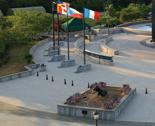
Research Library
Open 10 am -5pm, Monday - Saturday
NEWSLETTER TEAM Editor
Graham Dozier
Designer/Production
Donald Forst
Contributors
Jamie Bosket, James Brookes, Danni Flakes, Matthew Guillen, Adam Scher, Tracy Schneider, Andrew Talkov
20
EXECUTIVE TEAM President & CEO
Jamie O. Bosket
Chief Financial Officer
David R. Kunnen
VP for Advancement
Anna E. Powers
VP for Collections & Exhibitions
Adam E. Scher
VP for Guest Engagement
Michael B. Plumb
Associate VP for Human Resources
Paula C. Davis
VP for Marketing & Communications
Tracy D. Schneider
VIRGINIA HISTORICAL SOCIETY BOARD OF TRUSTEES Chair
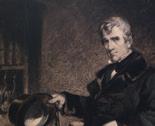
Richard Cullen*
Vice Chair
Carlos M. Brown*
Immediate Past Chair
Pamela Keicker Royall*
Honorary Vice Chairs
Austin Brockenbrough III
Harry F. Byrd III*
Nancy H. Gottwald
Conrad M. Hall*
Thomas G. Slater, Jr.*
Regional Vice Chairs
William H. Fralin, Jr.
Susan S. Goode*
Gen. John P. Jumper
Lisa R. Moore
33
The Virginia Museum of History & Culture is owned and operated by the Virginia Historical Society—a private, non-profit organization established in 1831.
Makola M. Abdullah
Neil Amin
Victor K. Branch*
Charles L. Cabell
Jeanette R. Cadwallender
Victor O. Cardwell
Herbert A. Claiborne III
William C. Davis
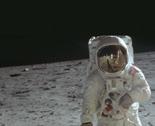
Joanie D. Eiland
Peter F. Farrell
Victoria D. Harker
Russell B. Harper
C. N. Jenkins, Jr.
G. Gilmer Minor III
Edward A. Mullen
John R. Nelson, Jr.*
Kevin B. Osborne
Xavier R. Richardson
Elizabeth A. Seegar
Gerald F. Smith, Jr.*
J. Tracy Walker IV
*Executive Committee
Issue Collections Spotlight page
Commonwealth History Fund page
Apollo Exhibit Preview page
William Henry Harrison page
Annual Honor
page
In This
12
24
16
Roll of Donors
Virginia’s Committee of Correspondence page
Cover: Astronaut Neil Armstrong takes first walk on moon, 1969 (NASA).
4
FROM THE PRESIDENT

Choose to go to the Moon ... at the VMHC.
A little more than 60 years ago, in 1962, President Kennedy offered the world, via a gathering of thousands at Rice University in Texas, another of his quintessential, passionate charges:
We choose to go to the Moon in this decade and do the other things, not because they are easy, but because they are hard; because that goal will serve to organize and measure the best of our energies and skills, because that challenge is one that we are willing to accept, one we are unwilling to postpone, and one we intend to win, and the others, too.
It was a promise ultimately fulfilled, and ahead of schedule. A moonshot that changed the world, and one that was made possible through the ingenuity and dedication of hundreds of Virginians.

As America’s passion for space gains steam once again, and as we return to the Moon (this time to stay awhile), the VMHC will serve as mission control for your historical journey. From learning how this American quest for the Moon was shaped in the Commonwealth to meeting many inspirational Virginians who have connected us with space in the decades since, you will see how this incredibly consequential American story is, in so many ways, a Virginia story.
Apollo: When We Went to The Moon, opening on March 18, will span more than three galleries at the museum—one of the largest special exhibitions we’ve ever mounted. Choose to visit, because it WILL be easy, and reflect on the immense possibilities available to us when we rally the best of our energies and skills around a worthy mission.
Thank you for your support of this special place. You enable us to reach new, ever greater heights.
Most sincerely,
Jamie O. Bosket, President & CEO
Make history with us!
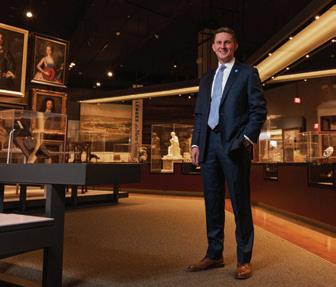
VirginiaHistory.org | 3
VMHC doesn’t receive state operating support. Your generous donations help fund our mission. Learn more at VirginiaHistory.org/Support
The
THE JOURNEY TO AMERICA’S 250TH: VIRGINIA’S COMMITTEE OF CORRESPONDENCE
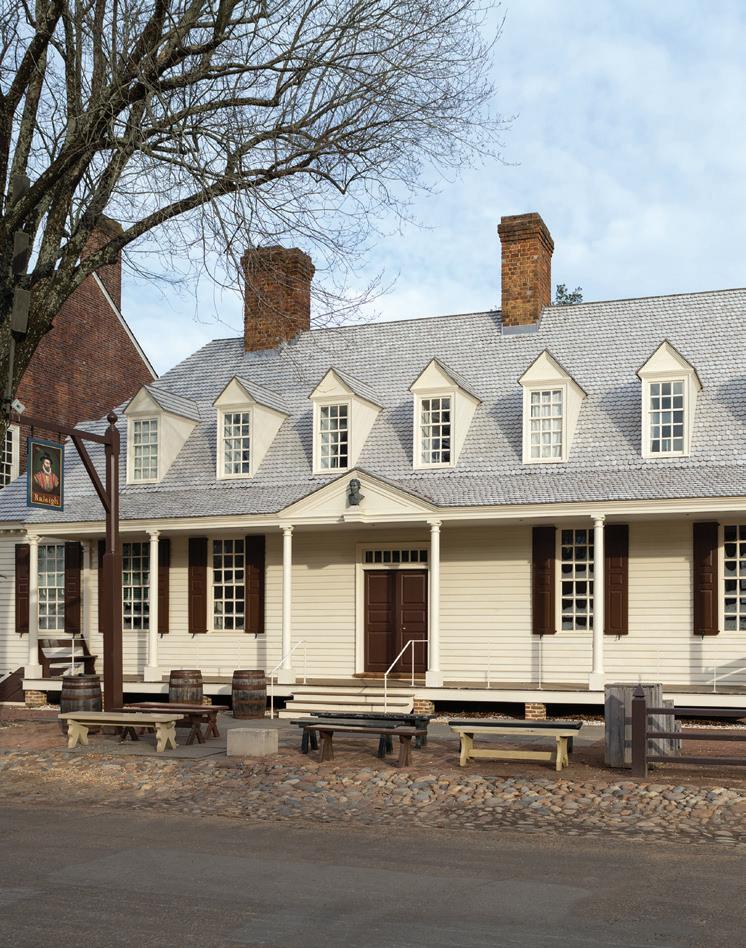
4 | Virginia History & Culture
Raleigh Tavern, Williamsburg, Virginia (The Colonial Williamsburg Foundation).
One evening in March 1773, 250 years ago, leading Virginia burgesses met in a private room at the Raleigh Tavern in Williamsburg. Richard Henry Lee, Thomas Jefferson, Patrick Henry, and other luminaries crowded around to pen a resolution for the establishment of a “standing committee of correspondence and inquiry.” Couped up as they were in a Williamsburg tavern, these prominent Virginians had a vision to bring unity to the thirteen colonies of North America.
Their efforts contributed to the establishment of a communications network that facilitated what historian Joseph J. Ellis has argued to be the first national dialogue in American history. Despite the underdeveloped nature of infrastructure on the East Coast, this system permitted ideas to travel in a way that defied the great distances within and between British North America’s colonies.
There was precedent for such a network. Committees of correspondence had enjoyed a long and substantial presence in the American colonies. From the early eighteenth century, they had existed to facilitate interaction and consultation between the colonial assemblies and London. As recently as the 1760s, the Sons of Liberty had used them to mobilize and coordinate opposition to the Stamp Act and the Townshend Acts in Massachusetts.
What made Virginia’s Committee of Correspondence and what happened in Williamsburg 250 years so important and different, was that, unlike the other earlier examples, Virginia was establishing a shared revolutionary discourse between the colonies themselves.
At its establishment on March 12, 1773, the Virginia Committee of Correspondence would have four major functions. First, it would “obtain the most early and authentic intelligence of all such acts and resolutions of the British Parliament.” Second, it would correspond “with our sister colonies, respecting these important considerations.” Third, it would urge legislative counterparts up and down the East Coast to “appoint some person or persons of their respective assemblies, to communicate from time to time with the said committee.” The Virginia committee would demonstrate the value of shared communication and push other legislatures to contribute to the discourse with their own committees.

VirginiaHistory.org | 5
And, finally, it would seek to inform itself regarding “a court of inquiry, said to have been lately held in Rhode Island, with powers to transport persons accused of offences committed in America, to places beyond the seas, to be tried.” Through its three primary functions, the committee would push for the establishment of a network of knowledge exchange by gathering intelligence and encouraging correspondence between the colonial legislatures.
The fourth function, with its mention of Rhode Island, referred to the June 1772 Gaspee Affair, an incident in which colonists, including leading citizens of Providence, had run aground and burned the British customs ship HMS Gaspee. It was another moment when tensions flared between Great Britain and its North American colonies. Imperial authorities responded to the attack by ordering that they would bring any perpetrators to England for trial. The colonies reeled: the right of a suspect to be tried by persons of his own community was perceived by many as a fundamental British liberty.

A year later, and just months before the founding of the Virginia Committee of Correspondence, the Old Dominion had experienced a “Gaspee Affair” in miniature, providing further impetus for an effective system of communication. For some time, rumors circulated that counterfeiters were forging treasury notes in Virginia. By January 1773, Robert Carter Nicholas, the colony’s treasurer, had justified the suspicions through the acquisition of ten “very ingenious and therefore dangerous” counterfeits. The forgers were operating out of Pittsylvania County, and it was understood that “people of fortune and credit” were involved.
Once more, illegal activities were taking place, and the authorities suspected local officials to be involved. Authorities identified and seized five suspects but, instead of delivering them to the county court for examination, an armed guard brought the accused and their equipment to Williamsburg for examination in February. Governor Dunmore and Attorney General John Randolph had the suspects interrogated

6 | Virginia History & Culture
Stamp applied to paper, British Stamp Act, 1765 procured from British Government by Joseph R. Ingersoll (VMHC Collection).
Interior, Raleigh Tavern, Williamsburg, Virginia (Wayne Reynolds, The Colonial Williamsburg Foundation).
intensely. There was a moment of relief after it was found that all but one of the suspects were guilty and sentenced to trial by the General Court. But any serenity was short lived. Burgesses quickly began to ask, what was there to stop a governor from having any individual dragged to Williamsburg at gunpoint to face interrogation? This question arose in Virginia as agitation over the Gaspee Affair reached fever pitch. Whether by the will of a colonial executive or the imperial metropole, Virginians fretted over newly perceived vulnerabilities to their rights and liberties.
It was in this climate that Virginia’s intercolonial committee of correspondence system emerged. The burgesses were careful to ensure that persons of immense stature and experience served on the committee to imbue it with authority and competence. These individuals were Richard Bland, Dabney Carr, Archibald Cary, Dudley Digges, Benjamin Harrison, Patrick Henry, Thomas Jefferson, Richard Henry Lee, Robert Carter Nicholas, Edmund Pendleton, and Peyton Randolph.
In a period where cooperation between the House of Burgesses and Lord Dunmore was already faltering, the committee’s creation brought about a markedly negative response from royal authority. Virginia’s royal governor almost immediately dissolved the House to disrupt this new intercolonial discourse. This only exacerbated already strained relations. By 1775, the two would be on a full collision course, punctuated by events like the Gunpowder Incident, Dunmore’s flight to the warship HMS Fowey , and his eventual proclamation offering emancipation to those enslaved persons who would abandon their American masters to fight for the British.

While never operating as a source of outright agitation and propaganda for the American cause, the farreaching intercolonial committees of correspondence, first established in Virginia, organized and maintained the communication channels by which Patriot leaders exchanged views up and down the entire

VirginiaHistory.org | 7
Painting, Peyton Randolph of Wilton by Matthew Pratt, ca. 1773 (VMHC Collection).
Painting, Portrait, Edmund Pendleton (1721-1803) by Sully Thomas, 19th c. (VMHC Collection).
eastern seaboard. This network encouraged unified thought and action in response to British intimidation and provided a foundation for continent-wide resistance against Parliament.


This spirit of unity would be key in summoning the First Continental Congress, with many committees taking a role in electing the delegates sent to Philadelphia. In fact, much of the Virginia delegation included members of its Committee of Correspondence, including Peyton Randolph, Richard Henry Lee, Patrick Henry, Benjamin Harrison, Edmund Pendleton, and Richard Bland.
Beginning as a means to seek clarity and build cohesion in the face of “reports of proceedings tending to deprive them of their ancient, legal, and constitutional rights,” a necessary “communication of sentiments” eventually flowed from these committees and between the colonies. With its emphasis on unified thought and action, the Virginian concept of intercolonial committees of correspondence contributed to the formation of a shadow government-in-waiting, one that stood ready to provide strong, effective leadership as British royal authority dissipated from the colonies and the Continental Congress would declare American independence in 1776.
8 | Virginia History & Culture
Painting, John Murray, Fourth Earl of Dunmore by Charles X. Harris, first half 20th c. (VMHC Collection).
COMMEMORATING
AMERICA’S 250 TH
The anniversary of Virginia’s Committee of Correspondence this spring is the first major milestone in an increasing number of historical moments leading up to America’s 250th on July 4, 2026. Marking these important occasions will be a major focus of the VMHC in the years ahead.
For nearly five years, the VMHC has been convening history organizations from across the state for preliminary planning conversations about how we can best serve the people of Virginia and our nation at this important time. This, in part, led to the creation by the General Assembly of a formal state commission to commemorate the 250th in Virginia. The VMHC will play a leading
role in this Commission’s work—being designated as the primary non-state agency partner to the Commission, and by the VMHC’s President & CEO sitting on the Commission’s Executive Committee.

This coming summer, the VMHC will announce its planned, multi-year portfolio of commemorative activities for the 250th. This will include major educational initiatives, exciting events and programs, and marquee exhibitions.

AMERICA’S 250TH
On the 250th Anniversary of Virginia’s Committee of Correspondence, join Pulitzer Prize–winner Stacy Schiff as she discusses her newest book, The Revolutionary: Samuel Adams.

March 12, 2023, at 4:00 pm
VMHC Member - $30
Non-member - $40
A light reception and book signing will follow the lecture. Reserve tickets at VirginiaHistory.org/Revolutionary
VirginiaHistory.org | 9
UPCOMING EVENTS
FAMILY PROGRAMS
First Fridays at VMHC – 5:00 pm
The museum will stay open late on the first Friday of each month. Between 5:00 pm and 8:00 pm, the museum will offer free admission to the galleries, specials in the Café, access to food trucks, live music, and family-centered activities.
Stories at the Museum – 10:00 am
Join museum educators the first Saturday of the month at 10:00 am for a read-aloud story time in one of the museum galleries, paired with a craft activity! This programs is aimed at early-middle elementary learners.
Sensory Friendly Morning – April 4, 9:00 am Museum gallery experience will be modified with sound and lighting adjustments, limited crowds, no films, and other accommodations geared toward audiences with sensory sensitivities.


DAYTIME LECTURES
Join guest lecturers at noon for a variety of topics throughout the Spring.

Movie Mythbusting (VIRTUAL)
Join the VMHC Education team as we “mythbust” your favorite historical films.
March 14, 7:00 pm – Apollo 13 (PG)
May 9, 7:00 pm – Hidden Figures (PG)
Spring into Space – Week of April 3rd
Spring Break Activities themed for VMHC’s newest exhibition, Apollo: When We Went to The Moon

March 16 – Making Treason Odious Again? Perspectives from the Congressional Naming Commission and the Army’s War on the Lost Cause by Connor Williams
April 6 – The Burning Land: When the Family Goes to War, and the War Comes Home by David O. Stewart
April 27 – Confessions of a Southern Church by Christopher Graham
May 5 – “War is horrid, in fact”: Virginians in the West Indies Expedition, 1740–42 by Craig Chapman
May 11 – Turning Fact Into Fiction: Using Archival Material about the Richmond Theater Fire to Write the Novel, The House Is On Fire by Rachel Beanland
May 25 – Spitfire: An American WWII Fighter Pilot in the RAF by Preston Smith
June 8 – The End of Public Execution by Michael Trotti
June 22 (VIRTUAL) – The Virginia Venture by Misha Ewen
10 | Virginia History & Culture
COLLECTIONS UP CLOSE
Join VMHC staff at 10:30 am as they curate displays featuring some of the museum’s millions of artifacts and manuscripts that are not currently on exhibit.

March 4 – Commonwealth Kids: Virginia’s Children and their Stories
May 6 – A Picture is Worth a Thousand Words: Photography in Virginia
MEMBER-ONLY EVENTS
CURATOR CONVERSATION
“We Choose to go to the Moon” (VIRTUAL)
February 27 10:00 am
“The Soldier’s Gaze” (VIRTUAL)
April 24 10:00 am
MEMBER MONDAYS
Enjoy a relaxing evening with live music from 5:30 pm to 7:30 pm on the following dates. Registration is free for members!
March 27 at VMHC (Special Apollo Tours)
April 17 at Virginia House
May 1 at Virginia House
June 5 at Virginia House
GARDEN PARTY
Mark your calendar for the 70th–annual Garden Party at Virginia House.

May 18 6:00 pm
Registration is required for both free and paid programs at VirginiaHistory.org/Calendar
APOLLO PROGRAMMING
Join the VMHC for Special Programming
Related to the New Exhibition Apollo: When We Went to The Moon.
April 16 – Profs & Pints: New Views of the Universe
May 11 – Stargazing at Virginia House
Not member yet? Join today at VirginiaHistory.org/Join.
SAVE THE DATE
Stuart G. Christian, Jr. Lecture
April 19 at 5:30 pm
One Giant Leap: The Impossible Mission That Flew Us to the Moon by Charles Fishman
1831 & Weddell Society Members – Complimentary
Patron Members – $18
VMHC Members – $28
Non-Member Guests – $38

VirginiaHistory.org | 11
COLLECTION SPOTLIGHT: PAMUNKEY POTTERY

12 | Virginia History & Culture
Photograph, “Digging clay on the Pamunkey River” by Frank G. Speck, 1918 (National Museum of the American Indian, Smithsonian Institution, N12587).
Mary Alberta Page Bradby (1903–1986), a member of the Pamunkey Indian Tribe, created this ceramic vessel (pictured at right) around 1970. The Virginia Museum of History & Culture was delighted to obtain this piece of Mary’s craftwork in 2022 - the first of its kind in the VMHC collection. Pottery made by Indigenous people marks a significant inclusion in the VMHC’s collections because it gives material form to their shared past, place, and experiences in Virginia.
Pottery is an invaluable tradition to the Pamunkey Indian people—it is a tangible piece of Pamunkey history and identity. For the Pamunkey, pottery plays a role as a significantly charged form of material culture to members of the Tribe. The evolution of Pamunkey pottery speaks directly to a history of selfrepresentation, tradition, change, and survival.
Dr. Ashley Atkins-Spivey, an economic anthropologist and member of the Pamunkey Indian Tribe, asserts in her pioneering study on pottery and the persistence of Pamunkey cultural practices, that tribal perspectives on pottery deeply entangle with issues of cultural continuity and economic necessity.
The vessel made by Bradby is rooted in a significant moment in this longer history of perseverance. Despite its creation within the past fifty years, this object encourages us to reflect thoughtfully on 3,000 years of Indigenous and Pamunkey history and crafting in what is now known as Virginia.
Indigenous people in Virginia first began making pottery out of local clays more than three millennia ago, and archaeologists believe that crafters introduced pottery-making techniques to the region from the Southeast. Indigenous people, predominantly women, crafted vessels in a multitude of shapes and sizes, and primarily used them for cooking and storage.
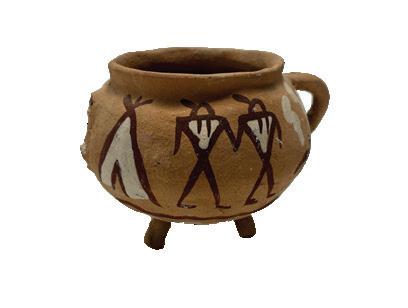
Typically, Indigenous Virginians created pottery in a process that first involved forming coils of clay. They would lay these coils on top of one another and pinch them together to create the walls of the vessel. The crafter would then smooth out these walls by hand or by using paddles to create flat surfaces. Crafters would decorate and texture their exterior surfaces by impressing cord, fabric, and netting against them, or by stamping or incising designs. Indigenous people would strengthen these vessels by using sand or crushed shell or rock to improve drying and firing. Pots used for cooking were often cone-shaped to allow the cook to heat the vessel’s contents more efficiently.
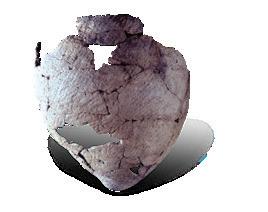
VirginiaHistory.org | 13
Fabric marked ceramic vessel found in King William County, 900-1600 (Virginia Department of Historic Resources).
(VMHC Collection).
By the mid-1700s, the Pamunkey Indians resided on their reservation lands in present-day King William County. The reservation was established in 1646 through treaty negotiations with England. It is one of the oldest continually inhabited reservations in the United States and was home to a burgeoning market in locally produced earthenware ceramics. The Pamunkey crafted plates, cups, chamber pots, and jars both for themselves and for sale to European colonists. These items underwent a gradual transformation from traditional forms to those which included European influences, illustrating cultural exchange as interactions became more frequent. This type of pottery is often referred to as “colonoware” by archaeologists. A typical example would be a pottery vessel using a European form which the crafter tempered with crushed shell.
By the mid-1800s, English—and then American— aggressive westward conquest and expansion, as well as industrialization and the Market Revolution, had dramatically altered Virginia’s local economy. Railroads, canals, and turnpikes brought cheap, mass-produced kitchen wares into the state, and the demand for handmade Pamunkey pottery decreased significantly. As of the 1900s, the market for locally

made utilitarian wares was nearly extinct. However, the dedicated efforts of a small number of Pamunkey ensured the preservation of Pamunkey pottery making. They recognized an opportunity in the rising market of tourism-based arts and crafts and began selling souvenirs, such as pipes and small decorative vessels, to reservation visitors.
When the Great Depression came, many Virginia Indians depended on hunting, fishing, and farming to make a living. B. N. VanOot, supervisor of Trade and Industrial Education on the Virginia State Board of Education, proposed the idea of using state funds to foster cooperative arts and crafts programs within the Pamunkey community. With the permission of the Tribal Council, the state government established the Pamunkey Pottery School in 1932 and a new way of making ceramics that would become known as the Pottery School Tradition.
The state provided materials to construct a building to house the Pottery School and for nonindigenous teachers. Teachers were responsible for introducing simplified pottery-making techniques focused on faster production as well as marketing strategies geared toward treating ceramics as souvenirs and tourist art.
Borne out of economic necessity, traditional methods of pottery-making gave way to methods that would hasten production, involving the use of pottery wheels, squeeze molds, and kiln firing. Non-indigenous instructors encouraged painted pictographs, southwestern motifs, and imagery characteristic of indigenous peoples from the Plains over the use of textiles and incision to decorate vessels. This is notable on Mary’s bowl, which features the pictographs and Plains Indian imagery. Vessels ranged from designs that resonated emphatically with Euro-American ideas of an apparently homogenous “Indianness,” like southwestern wedding jars, effigy pipes, and
14 | Virginia History & Culture
Their seetheynge of their meate in earthen pottes, 1590, engraving by G. Veen based on watercolor by John White (VMHC Collection).
canoes, to more simplified decorative forms like bowls, plates, vases, and even ashtrays. Objects like Mary’s bowl emphasize this complicated history, as tourists’ tastes, preferences, and ideas about indigeneity had a marked influence on these wares, even as their sale was necessary to economic survival and cultural persistence.
As emphasized by award-winning Pamunkey potter Joyce Krigsvold in Dr. Atkins-Spivey’s master’s thesis, one of the only remaining attributes of past Pamunkey pottery production was the use of local clays from deposits along the Pamunkey River. Even so, potters found ways to emphasize imagery that resonated with their culture, identity, and history. Rivers, water, fish, and turtles feature prominently and underscore enduring ties to the Pamunkey River.
Once the state and Tribe had founded the school, members of the Pamunkey quickly established a cooperative—the Pamunkey Pottery Guild—to ensure a greater degree of self-determination. The Guild members, all of whom were women, organized and managed the potters, production, and the market. Using a committee structure, the Guild included a president, secretary, and treasurer, and members included Pamunkey women like Daisy Stewart Bradby, Dora Cook Bradby, Lucy Allmond Page, Ada Bradly Bush, Ruth Bradby Cook, Pocahontas Cook, Douglas Miles Martin, and Bernice Bradby Langston. These women and others were responsible for purchasing crafting supplies, recording sales transactions, and standardizing prices.
When the Display House became dilapidated in the early 1950s, the Guild converted the small ca. 1909 school building on the reservation into a new space in which they could exhibit and market their wares. In the 1970s, there was a movement to revitalize traditional methods of producing pottery. Some makers, like Daisy Stewart Bradby, were creating vessels in the Late Woodland archaeological style (1000 BCE–1000 CE) in the 1980s. These revitalized forms of making pottery were referred to as Black Ware.
To this day, Pamunkey potters actively sell, display, and market their wares in the Pamunkey Indian Museum’s gift shop, producing both the School Tradition and Black Ware pottery. Not only does this work serve as a means for revenue generating among the Pamunkey, but, as Dr. Atkins-Spivey and other Pamunkey members note, it remains a potent symbolic process—one steeped in cultural continuity.
Creating ceramics connects the maker to potters of the past: both recent relatives that have passed, and more distant ancestors. The Pamunkey do not define tradition as something that must exist as an exact replica from before English colonial expansion. The Tribe’s continuous tradition of making pottery is no different as vessels are created in reference to contemporary interpretations of past practices, influenced by adopted and imposed change. In this, there is permanence; reflecting cultural and economic endurance over hundreds of years of adaptation in the face of encroaching European and American settlement, and to a past deeply entrenched in the ways of Pamunkey ancestors.
Within this organized structure, the members founded a Display House Committee to specifically promote the pottery products and to manage sales on the reservation. This committee located a Display House, known as the Trading Post, at the entrance of the reservation to entice prospective buyers. Members decorated and used signage and carefully curated displays to promote the vessels and items for sale.
This Collections Spotlight would not be possible without the work of Dr. Ashley Atkins-Spivey and the contributions and perspectives of members of the Pamunkey Indian Tribe so integral to her research. This spotlight draws specifically from Atkins-Spivey’s 2009 William & Mary master’s thesis, entitled “Pamunkey Pottery and Cultural Persistence.”
VirginiaHistory.org | 15
NEW EXHIBITION: APOLLO: WHEN WE WENT TO THE MOON

16 | Virginia History & Culture
Photograph of astronaut Edwin “Buzz” Aldrin, Jr., taken while on the lunar surface, 1969 Astronaut Neil Armstrong (NASA).
In July 1969, Neil Armstrong became the first person to walk on the Moon.

His achievement reflected the skill and determination of more than 400,000 engineers and technicians who worked to train, launch, land, and safely recover Armstrong and his fellow Apollo 11 crewmembers. As millions watched grainy images of a lone figure 250,000 miles from home step onto another world, humanity’s dream of space travel became a reality.
Now, as the United States once again journeys to the Moon, the VMHC will explore the dramatic history of the Space Race and the significant roles played by Virginia and Virginians in a major new exhibition, Apollo: When We Went to The Moon. There are countless fascinating stories associated with the human space program; here are a few that may ignite a desire to know more.
Rocket Man
If not for a single choice made by the charismatic German-born aerospace engineer, Dr. Werner von Braun, the possibility that United States could land astronauts on the Moon by 1970 would have been a fantasy. Von Braun was a former Nazi who developed rocket technology for Germany during World War II and is best known for developing the infamous V-2 rockets (Vengeance Weapon 2) used to bombard England. As Germany collapsed, von Braun and his team

VirginiaHistory.org | 17
President John F. Kennedy (right) meets with Dr. Werner von Braun (center) at Cape Canaveral, Florida, on November 16, 1963. Kennedy —who challenged the United States to land astronauts on the Moon before the end of the 1960s—was assassinated six days later, 1963 (NASA/Kennedy Space Center).
of engineers chose to surrender to the United States Army instead of falling into the hands of the Soviets. Von Braun said that only by surrendering themselves and their technology to “people who are guided not by the laws of materialism but by Christianity and humanity” could they prevent another major conflict. From 1945 to 1960, Dr. von Braun worked on missile and rocket technology for the U.S. Army. In 1960, he became the director of the George C. Marshall Space Flight Center in Huntsville, Alabama, where he oversaw the development and creation of the Saturn rockets that would launch the first Americans beyond Earth’s orbit and on to the Moon.
Facility in October 1959. Seven Little Joe rockets were launched between August 1959 and April 1961 to test the Mercury capsule.

To help determine the effects of spaceflight and weightlessness on humans, an 8-pound Rhesus monkey named Sam launched in Little Joe-2 from Wallops Island on December 4, 1959. During his 11-minute flight he withstood forces 10 times his body weight (G-force) before reaching a peak altitude of 53 miles and experiencing about 3 minutes of weightlessness. Sam splashed down in the Atlantic Ocean and survived his journey, He returned to the Air Force School of Aviation Medicine in Texas where he lived until 1982. Sam and the many other animals used in testing throughout the early space program led the way for Mercury astronaut Alan Shepard (1923–1998), who became the first American in space.
Whoopie!
In Hampton, Virginia, scientists and engineers at NASA Langley Research Center developed a lowcost launcher to test the Mercury, and later Apollo, spacecraft. Built by North American Aviation (now Boeing), the rocket pioneered the use of a clustered rocket engine. Because drawings of the four-rocket cluster looked like four holes, the project was named “Little Joe”—a term used in craps when both dice land on the number two. The first successful launch of a Little Joe rocket was at Virginia’s Wallops Island Flight
In only 11 words, Neil Armstrong captured the spirit of the remarkable human achievement that allowed him to take his first step on the Moon. On November 19, 1969, as commander of Apollo 12, Charles “Pete” Conrad, Jr., (1930–1999) became the third person to step on the lunar surface. Taking his first step onto the Ocean of Storms, Conrad exclaimed, “Whoopie! Man, that may have been a small one for Neil, but that’s a long one for me.” The Princeton-educated aeronautical engineer and navy test pilot who flew on two Project Gemini missions was a colorful character. It was not a surprise to anyone who knew him that his first words on the lunar surface was a joke. At 5’6” tall, Conrad was comparing his height to that of Neil Armstrong— who, at 5’11”, just made the height cutoff to be an astronaut. In addition to his three flights in the 1960s, Conrad led the first crewed mission to Skylab—the first United States space station—and in 1973 spent nearly a month in space.
18 | Virginia History & Culture
Little Joe and Sue
Little Joe rocket (LJ1B) launches from the Wallops Island (Virginia) flight facility, (NASA/Marshall Space Flight Center).
Snoopy Goes to Space
For more than 50 years, Snoopy has been a part of the United States human spaceflight program. Snoopy first became a mascot for NASA in 1967, when the agency asked to use the character to raise awareness and prevent accidents as part of their Manned Flight Awareness (MFA) program. By 1968, Snoopy was a full-fledged astronaut.
Apollo 10 was the final test flight before a lunar landing attempt. The crew’s mission was for the lunar lander to skim the Moon’s surface at 50,000 feet and “snoop around.” The crew named their Command Module “Charlie Brown” and the Lunar Lander “Snoopy.” A Snoopy doll first went into space aboard Space Shuttle Columbia in 1990, and the partnership between NASA and Peanuts Worldwide continues. In December 2022, a custom Snoopy doll was suited up and flew on the unpiloted Artemis I mission—along with a pen nib from Charles M. Schulz’s Peanuts studio and space themed comic strip.
expensive, too bulky, and too heavy. In early 1969, just months before the launch of Apollo 11, two engineers from General Motors—armed with a design that looked more like an open-top dune buggy—convinced Werner von Braun, head of the “Moon Mobility” program, to include an LRV as part of the Apollo missions. The only catch was that the vehicle had to fit into a triangular-shaped storage compartment on the lunar lander. The space was 5-feet wide at the bottom, 5-feet tall, and 5-feet deep—not much larger than the trunk of a car. General Motors designed the vehicle, which was then built by Boeing, to allow the front and back of the LRV to be folded into the center. Once completed, the wheels folded into the center and angled to fit the compartment. The LRV’s first mission was Apollo 15. In 15 minutes of driving, astronauts David Scott and James Irwin traveled farther than any of the previous Apollo crews. They not only covered more ground, but they provided valuable real-time information about the Moon’s geology. By the final lunar mission, Apollo 17, the rover allowed astronauts to travel 10 times as far and provide scientists with a more complete understanding of the Moon. All three lunar rovers are still there.
ON DISPLAY
March 18 to December 31, 2023 Presented
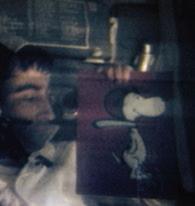
Compact Cars
In the early 1960s, NASA developed elaborate plans for an enclosed lunar roving vehicle (LRV), but the project was cancelled because they were too
VirginiaHistory.org | 19
Apollo 10 command module pilot John W. Young (1930–2018) holds a drawing of Snoopy while the spacecraft was about halfway (112,000 nautical miles) to the Moon, 1969 (NASA).
With
From
by
Support
Conrad Mercer Hall Kevin & Theresa Osborne Linda M. Warren Special Exhibitions Fund
WILLIAM HENRY HARRISON

20 | Virginia History & Culture
Painting, William Henry Harrison by Alonzo Chappel, second half 19th c. (VMHC Collection).
It is said that William Henry Harrison (1773–1841), born 200 years ago, usually holds the most interest for historians of the Northwest Territory. For his role in the origins of American Indian policy during Thomas Jefferson’s presidency (1801–1809), he has been called, “Mr. Jefferson’s Hammer.” He is, however, perhaps best known simply as the ninth president of the United States—the one who died in office 31 days after his inauguration. That said, Harrison spent his first 18 years in Virginia, and his deep roots there set the course of his life.
Harrison was born at Berkeley Plantation in Charles City County, Virginia, on February 9, 1773, which itself is associated with several firsts. In 1619—the year that enslaved Africans were first brought to Virginia—38 Englishmen landed at the site that would become Berkeley and, as their charter required, knelt in prayers of thanksgiving (of course, Massachusetts traditionally gets credit for the First Thanksgiving in 1621). In 1622, the Powhatan leader, Opechancanough, coordinated a series of attacks on English settlements sparking a ten-year conflict—the Second Anglo-Powhatan War—and Berkeley was abandoned. Following decades of strife that included Bacon’s Rebellion, Berkeley was acquired by the Harrison family (in the meantime, it was owned by Giles Bland until he was hanged for participating in the Rebellion). Berkeley would, of course, be visited by further conflict in the centuries to come, including the Revolutionary and Civil War (during which it was also where the bugle call “Taps” was first played).

(1673–1710) served as Virginia’s attorney general, speaker of the House of Burgesses, treasurer of the colony, and was the Benjamin Harrison who first owned and lived at Berkeley. His son (and William Henry Harrison’s grandfather), Benjamin Harrison IV (1693–1745), was also member of the House of Burgesses and, in 1726, built the plantation house that stands today.
The Harrisons—one of the “First Families of Virginia”—had Virginia roots almost as deep as Berkeley. Benjamin Harrison I (1594–1648)— the first of many Benjamin Harrisons—arrived sometime before 1634 and was elected to Virginia’s governing council. Benjamin Harrison II (1645–1713) was a justice and sheriff of Surry County in the 1670s. Benjamin III
William Henry’s father, Benjamin Harrison V (1726–1791), was known as “The Signer.” Along with serving in Virginia’s House of Burgesses like his many namesakes, he was a delegate to the Continental Congress and, during the Second Continental Congress, he shared a house with fellow Virginian, George Washington. By the 1720s, nearly all of Virginia’s leading families were related by blood or marriage, and William Henry Harrison was well-connected on his mother’s side too. Elizabeth Bassett Harrison (1730–1792) was related to Martha Washington and was the daughter of Robert “King” Carter.
William Henry was two years old at the outbreak of the Revolution. Virginia’s gentry were most committed to their role as Virginia’s leaders
VirginiaHistory.org | 21
Old Harrison Mansion, Berkeley Landing, James River, Virginai by Robert Knox Sneden, July 1862 (VMHC Collection).
rather than to King George III, and they rallied to the cause espoused by men like Patrick Henry. Unlike many planters, William Henry’s father was more conservative. It was only when British policies reached their peak that he advocated independence. The threat to emancipate enslaved Virginians was a key motivation, and Benjamin Harrison V chaired the committee that approved the Declaration of Independence in 1776.
The war came home in 1781. After burning Richmond, Loyalist troops under Benedict Arnold approached Berkeley and the family fled. When they returned, they found the mansion intact, but furnishings, clothes, portraits, and personal effects were burned, livestock was taken or destroyed, and many of the 120-or-so enslaved people were gone. Supposedly, William Henry remembered that a British nobleman visiting after the Revolution said to his father that Virginia’s mansions were very fine but lacked the portraits and interiors of their English counterparts. His father replied, “I can account for my painting and decorations, sir— your soldiers burned them in my backyard.”
William Henry was the youngest son in a family of seven children and, when it came time to educate him, the main consideration was apparently expense. Berkeley would go to the first son, Benjamin Harrison VI (1755–1799), and Carter Bassett Harrison (1756–1808), the second son, was to attend the College of William and Mary to prepare for a life of law and politics. At 13 or 14 in 1786 or 1787, William Henry Harrison went to Hampden-Sydney College. Among Harrison’s class of 1791, were George Bibb, a future chief justice of Kentucky and U.S. secretary of the treasury, and James A. Jones, a future U.S. surgeon-general.
Harrison wrote of his education:
“Inferior to many of my Class at College as a Latin & Greek scholar, I was considered inferior to but one in Belles Lettres information & particularly in History. I was acquainted with the accounts of all the battles described by ancient Authors from Homer to Julius Caesar. And I had actually read through the ponderous Work of Rollin which treats of Grecian & Roman history three times before I was 17 years old.”
This would manifest itself later in Harrison’s letters and public speeches, which are full of references to Roman generals, and he carried a copy of Cicero with him to war.
William Henry withdrew from Hampden-Sydney after just three years. Exactly why is uncertain; that being said, the college’s influential president, John Blair Smith, seems to have been a major factor in Harrison’s choosing Hampden-Sydney in the first place. When Smith resigned in 1789, it left the college’s future uncertain, and Harrison left the college in 1790.
From there, Harrison went to study medicine with Dr. Andrew Leiper (1750–1798) in Richmond,

22 | Virginia History & Culture
where his eldest brother also lived. Details on Leiper’s life are scant but, interestingly, his name does appear in the minute book of the Amicable Society of Richmond (part of the VMHC’s collections). Founded in 1788, the society’s purpose was to “relieve strangers and wayfairers in distress” and promote various charitable causes.
While in Richmond, William Henry Harrison— by now 17 or 18 years old—is believed to have joined a Quaker abolitionist society. “Believed” because Harrison, a slaveowner, disowned his involvement in the society and consistently resisted any interference with slavery. He later petitioned Congress to allow slavery in the Northwest Territory for ten years, and to allow that enslaved persons brought there should remain enslaved for life. As a presidential candidate, though, Harrison was happy to use the episode to show his northern supporters that he was not proslavery. Notably too, the society’s leader, Robert Pleasants (1723–1801), was a political enemy of William Henry’s father and recorded in his diary how Benedict Arnold’s troops had taken 40 of the Harrison’s enslaved people when they raided Berkeley plantation.
Some historians have concluded that William Henry’s flirtation with the abolitionist society led his father—a “violent opponent” of emancipation—to send his son away from Richmond. Philadelphia, though a hotbed of abolitionist sentiment, offered the best medical education and an old family friend there, Robert Morris, could keep an eye on the young William Henry Harrison. William Henry had hardly arrived in Philadelphia, though, when his father died in 1791, leaving his future uncertain.
It was Harrison’s Virginia background that provided the solution. William Henry, now 18, lingered in Philadelphia for several months before taking the advice of his cousin, Virginia governor Richard Henry Lee: he abandoned medicine and applied for a commission in the army. Lee personally presented the application to the secretary of war and President George Washington—who had shared a house with William Henry’s father years before. Washington “had no reason to reject the request of the son of an old friend.” From Philadelphia, William Henry Harrison’s path took him far from old Virginia to the Old Northwest and, eventually, to his short-lived presidency.
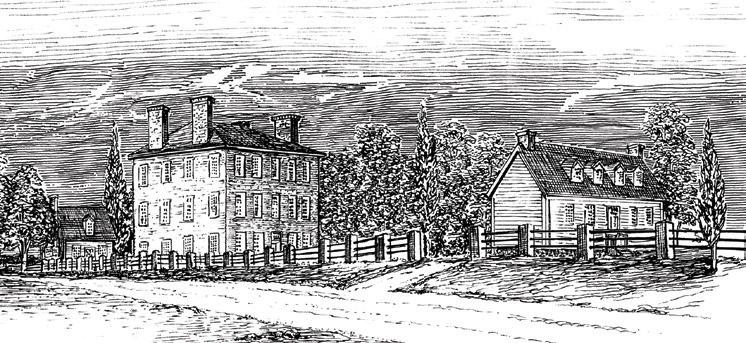
VirginiaHistory.org | 23
Line drawing of Hampden-Sydney campus in 1785 by N. Douglas Payne (Hampden-Sydney College).
THE COMMONWEALTH HISTORY FUND
 Aerial view of National D-Day Memorial, surrounded by the Blue Ridge Mountains (National D-Day Memorial Foundation).
Aerial view of National D-Day Memorial, surrounded by the Blue Ridge Mountains (National D-Day Memorial Foundation).
24 | Virginia History & Culture
Saving and sharing the important history of Virginia and Virginians has always been at the heart of the VMHC’s mission. Today, it is fulfilling this essential work in greatly expanded and impactful ways. As the VMHC’s efforts at the museum continue to flourish, with record visitation and activity following its 2022 grand re-opening, its statewide outreach has similarly grown. In late 2022, the VMHC accepted applications for the second cycle of its annual history grant program, the Commonwealth History Fund—a powerful tool for amplifying the great work happening all across the Commonwealth by hundreds of history-focused organizations.
Thanks to a generous and timely investment by long-time VMHC supporter Dominion Energy, and others, the VMHC established the Commonwealth History Fund, a significant new endowment and grant-making program in early 2022. Likely the largest of its kind, the Fund will provide more than $400,000 annually in grants to history projects and organizations across the state and at least $2,000,000 in its first five years of operation. Considerations for grants include: the significance of the project or resource and its impact on its community and the Commonwealth; the project’s focus on historically underrepresented topics and communities; and the need for funding and the urgency of the project.
The Commonwealth History Fund’s annual grantmaking program is administered in partnership with Virginia’s Department of Historic Resources (DHR).
“DHR couldn’t be more excited to collaborate with our VMHC neighbors as well as partners across the Commonwealth to take the preservation and interpretation of Virginia history to the next level,” said Director of DHR Julie Langan. Funds can be used for a variety of purposes including preservation, research, publications, acquisition and conservation of artifacts, and educational programming. Eligible
recipients include Virginia non-profits, educational institutions, and Virginia state recognized Indian tribes.
The response to the Commonwealth History Fund’s second call for proposals was as impressive as the first. More than 60 applicants representing all eligible categories from all regions of Virginia applied. Grant submissions were thoughtfully considered by a joint panel of experts at the VMHC and DHR. During a special reception at the VMHC on February 9, the 2023 slate of winners was announced. Eleven museums, tribes, and other history organizations from all areas of the state were awarded a total of $401,206.
“The Commonwealth History Fund has quickly become one of the best tools we have as your state history museum to support history education and preservation efforts taking place in your local community,” said VMHC President & CEO Jamie Bosket. “We are so very thankful for this opportunity to invest in the work of our fellow history organizations, now and for years to come.”
We are so very thankful for this opportunity to invest in the work of our fellow history organizations, now and for years to come.
– Jamie Bosket, VMHC President & CEO
2022
12 Awardees
$402,500 Awarded
2023
11 Awardees
$401,206 Awarded
VirginiaHistory.org | 25
“ “
COMMONWEALTH HISTORY FUND 2023 AWARDEES
Virginia Nottoway Indian Circle & Square Foundation (Portsmouth, Virginia): Virginia
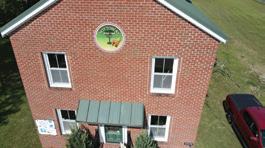
Nottaway Indian Circle & Square Foundation
Property Acquisition – Phase 1
the contributions of their ancestors, and opportunities to acquire and enhance their current display of artifacts and historical documents.
The Reedville Fishermen’s Museum (Reedville, Virginia): Preserving the William Walker House, a 19th Century Chesapeake Bay Waterman’s Cottage
In 2010, the Nottoway Indian Tribe of Virginia, was formally recognized by the Virginia State Legislature. An Iroquoian people whose relationship with the land goes back thousands of years, they are a primary resource for facilitating the teaching of Nottoway culture and existence, both past and present. Funds will allow the Tribe to purchase the property they currently lease, cementing their place in history. They will also provide a safe and secure building for increasing public engagement through hands-on educational workshops, commemorating
The mission of the Reedville Fishermen’s Museum is to protect and share the maritime history of Reedville and the lower Chesapeake Bay. Built in 1875, the William Walker House is the oldest extant house in the working fishing village of historic Reedville, Virginia. This project consists of several fundamental phases for the long-term preservation of this vernacular-style house, including a Historic Structures Report, the elevation of the house and construction of new piers/foundation, site work to redirect storm water, installation of the new HVAC system, and research for future programming that will illustrate the life of an average waterman.
26 | Virginia History & Culture
Nottoway House (Nottoway Indian Tribe of Virgina).
AAHA’s co-founders, Karen King Lavore, and Karen Hughes White, began their genealogy research in the late 1980s. Meeting at the courthouse and sharing stories with elderly family members prompted them to organize a group of interested parties in several disciplines (Afro-American Historical Association of Fauquier County).

Afro-American Historical Association of Fauquier County (The Plains, Virginia): Know Their Names: Phase II

The Afro-American Historical Association of Fauquier County’s signature genealogical and research program, Know Their Names, shares the identities of Fauquier’s enslaved population, beginning with the county’s founding in 1759. Funding will support phase two of this open-access resource to integrate six datasets—births, deaths, marriages, wills, deeds, and the 1870 Census— with newly designed interactive maps. These maps will reveal not only names of free and enslaved Black individuals but also where they lived and worked, and their movements within the county. Additionally, the project focuses on researching, documenting, and abstracting 61 names of enslaved individuals listed in Chief Justice John Marshall’s estate papers along with documenting the enslaved individuals who lived and worked at the Oak Spring Garden site in Fauquier, formerly Rokeby owned by Nathan Loughborough and Little Oak Spring owned by Robert Fletcher.
Mattaponi Indian Tribe (West Point, Virginia): Mattaponi Restoration: Supporting Tribal Sovereignty through Archival Research
A state-recognized tribal community, the Mattaponi Indian Tribe (MIT) is currently seeking sovereignty through the Federal Acknowledgment process. These funds allow the MIT to hire a part-time researcher to visit archival repositories, digitize and organize any historical documents collected, and communicate these findings to the tribal community and larger public through updates to the tribe’s website. The gathering of historical documentation is key to tribal sovereignty, and the project itself will ensure that Virginia’s Indian communities are empowered to speak their own histories, provide MIT with a deeper and more accurate historical record with its petition for federal acknowledgment, and enable them to administer social programs tailored to their community in ways that will sustain the Tribe well into the future.
Lincoln Preservation Foundation (Lincoln, Virginia): The Saving Grace Project: Roof Reconstruction at the Grace Heritage Site
VirginiaHistory.org | 27
Grace Church Congregation, 1910 (Friends of Grace Nonprofit).
Originally known as Grace Methodist Episcopal Church, the Grace Heritage Site represents a significant social, religious, cultural, and racial chapter in Loudoun County’s past. Built by skilled African American stonemasons and carpenters in 1885, funds are being used to rebuild the original 137-year-old roof and protect the building from further damage and decay. The project will eliminate the threats of water damage and structural deterioration at the roof line, mitigate insect infestation and rot, and provide safe access to the building. These changes will allow for other important interior restoration work to begin on this important landmark in the Goose Creek Historic District.
National D-Day Memorial Foundation (Bedford, Virginia): Accounting for the Untold Stories of WWII
This project will utilize an array of immersive content to tell the often-overlooked stories of the service and sacrifice of African Americans during WWII, as well as women in general who contributed to the war effort overseas. The Memorial is designing two educational pamphlets focusing on the African American experience on D-Day and the critical stories of women whose lives were profoundly shaped by their wartime journey. In addition, a new mobile app and multimedia walking tour will allow visitors on site to find these specific stories at the Memorial while the creation of an interactive virtual map for the Memorial’s website will compile these narratives in one place so that online visitors can access them easily.
Montgomery Museum of Art and History (Christiansburg, Virginia): Telling
the Stories of Virginia’s Appalachia: Preservation and Digitization Lab
and presenting the history and cultural heritage of Appalachian Virginia. To make such storytelling possible, the museum is creating three essential features for the site: a preservation and digitization lab with a photography station for cataloging collections; a digitization station to improve access to the museum’s archives and collections for patrons and staff; and a video and audio production area for creating audiovisual materials for exhibitions, educational programs, and conducting oral history and artist interviews. Additionally, a student intern will be employed to assist in digitizing and indexing the museum’s rich resources to make the region’s history more readily available and easily shared.
Fluvanna Historical Society (Palmyra, Virginia): The Words They Left Behind Them: Legacies of Bremo
Working with the Bremo Descendants Committee and others, The Words They Left Behind Them: Legacies of Bremo is a new exhibition featuring voices of those enslaved at Bremo, as well as plantation owner, John Hartwell Cocke. The exhibition will feature an incredible collection of primary source materials, including letters written by enslaved men and women from Bremo extant in the Fluvanna Historical Society’s archives, along with those in special collections at the University of Virginia, and artifacts. As a result, visitors will connect with the humanity of all who lived at Bremo, gaining a deeper understanding of the reality of their daily lives, and will be encouraged to think more deeply about the history of this historic place.
George Mason’s Gunston Hall (Mason Neck, Virginia): Native Peoples: Connecting Past and Present
The Montgomery Museum of Art and History seeks to rehabilitate its new, larger facility and fully equip spaces crucial to the mission of preserving
By analyzing archeological evidence and conducting original research, Gunston Hall and its collaborators are building a greater scholarly understanding of the pre-colonial inhabitants who once lived in and around the area George Mason would later call
28 | Virginia History & Culture
home. Of particular focus in this work are the Native people known variously as the Doeg, the Taux, and the Myompse. The project also includes creating outdoor interpretive panels, a film, and expanded web content to share this history with the public. These materials will highlight the diverse stories of Indigenous communities in the northern part of the Commonwealth, and invite visitors to reexamine narratives of Native people as they relate to the American Revolution.
Woodland Restoration Foundation (Henrico, Virginia): Woodland Cemetery Chapel Renovation

The Woodland Restoration Foundation’s (WRF) mission is to restore the Historic African-American Cemetery, located in the East Highland Park neighborhood of Richmond, to a condition that shows dignity and respect to all that are interred there. This project will provide substantial retrofitting of the property’s nonfunctional septic system and drain field to support a bathroom in the chapel building to serve visitors and volunteers. WRF will then proceed with creating a historical and educational center on the grounds to teach visitors and community groups about the history of Woodland Cemetery and the Black community in Richmond.
Fort Harrison, Inc. (Dayton, Virginia): Unearthing
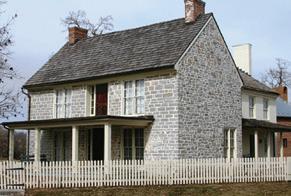
Fort Harrison’s Diverse Cultures
Fort Harrison, Inc., was established in 1978 to restore and preserve the home of Daniel Harrison, one of the Shenandoah Valley’s earliest settlers. Presently, the organization works to preserve the heritage of all the Shenandoah Valley’s early settlers. This important archaeological research and documentation project promises significant understanding about Fort Harrison’s grounds and the adjacent Koogler pastureland with subsequent scientific analysis and reporting. Findings will add immeasurably to what is known about the Harrisons, early valley culture, Native Americans, and African Americans—and their intersecting lives to illustrate a more complete and accurate history of the central Shenandoah Valley.
VirginiaHistory.org | 29
Fort Harrison, 2015 (Fort Harrison, Inc.).
George Mason’s Gunston Hall (Gunston Hall).
READ WITH US
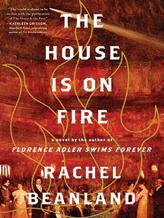

TAKE ADVANTAGE OF THE BENEFITS OF MEMBERSHIP
Members receive 10% off all purchases in the museum store including lecture books! Plus:
4 FREE PARKING
4 10% off in the Museum Café
4 Member-only exhibition previews
4 FREE admission to the museum and daytime lectures
4 Discounts on special events, classes, and more
Reserve tickets to upcoming lectures at VirginiaHistory.org/Lectures

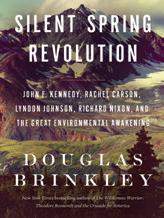

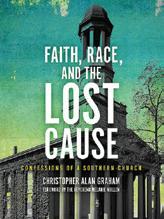
12 | Virginia History
Culture
&
30 | Virginia History & Culture
Your purchase at ShopVirginiaHistory.org supports the VMHC’s mission!
New Leadership & New Members
The Board of Trustees of the VMHC welcomed new leadership and three new trustees in January 2023.
Richard Cullen, Chair
Raised in Staunton, Richard Cullen now lives in Henrico. He is the Counselor to the Governor of Virginia, and previously served as Chairman of McGuireWoods. In addition to success in both the private and public sector, to include serving as United States Attorney for the Eastern District of Virginia as well as Attorney General of Virginia, he is also active in numerous civic organizations in the Richmond area and across the Commonwealth of Virginia. Mr. Cullen received his undergraduate degree from Furman University and his J.D. from the University of Richmond.
Carlos M. Brown, Vice Chair



Carlos Brown lives in Richmond, Virginia. He is Senior Vice President, Chief Legal Officer, and General Counsel for Dominion Energy. A member of the Board of Visitors of the University of Virginia, he also serves on the boards of the Central Virginia Transportation Authority, the Richmond Metropolitan Transportation Authority, NextUp RVA, and the Commonwealth Transportation Board. Mr. Brown received his undergraduate and J.D. degrees from the University of Virginia.
Victor O. Cardwell
Originally from Lynchburg, Victor O. Cardwell now lives in Salem. He is the chairman of the Roanokebased law firm Woods Rogers Vandeventer Black. Victor is President of the Virginia Bar Association and serves on the Virginia State Bar’s Board of Governors for its Diversity Conference. He received his undergraduate degree from University of Virginia and his J.D. from Washington and Lee University.
Victoria D. Harker
Victoria Harker lives in McLean, Virginia. She is the Executive Vice President and Chief Financial Officer at the media company TEGNA Inc. (formerly Gannett Co.). In addition to her service on various corporate boards, Mrs. Harker has also been an active member of the University of Virginia’s Board of Visitors, the University of Virginia’s Alumni Association Board of Managers, and the Board of WolfTrap Foundation for the Performing Arts. She was appointed to the State Council of Higher Education for Virginia (SCHEV) in 2019 and elected Secretary for the Council in 2022. Mrs. Harker received her undergraduate degree from the University of Virginia and her M.B.A. from American University.

Xavier R. Richardson
Xavier Richardson lives in Fredericksburg, Virginia. He is the Senior Vice President & Chief Development Officer of Mary Washington Healthcare as well as the President of the Mary Washington Hospital and Stafford Hospital Foundations. In these roles, he manages fundraising, assists with grant-making efforts for community organizations, and oversees the Mary Washington Hospital Foundation, Stafford Hospital Foundation, and Mary Washington Healthcare Community Programs. Mr. Richardson received his undergraduate degree from Princeton University and his M.B.A. from the Harvard Business School.

VirginiaHistory.org | 31 NEWS AND NOTES
PARTNERS

Richmond

32 | Virginia History & Culture ANNUAL
PUBLICATIONS Virginia Magazine of History & Biography Virginia History & Culture Magazine EXPENSES Collections, Exhibitions, & Research $1,683,631 Guest Engagement, Communications, & Community Outreach .................... $1,996,435 Advancement .................................. $1,035,839 Administration & Operations ............. $3,102,685 Total Expenses .................................. $7,818,590 REVENUE & SUPPORT Contributions, Membership, & Donor Support ..............................$3,609,708 Earned Income & Other ....................$2,132,829 Support From Endowment .................$2,508,296 Total Revenue ...................................$8,250,833 Support From Endowment $2,508,296 Contributions, Membership, & Donor Support $3,609,708 Earned Income & Other $2,132,829 Guest Engagement, Communications & Community Outreach $1,996,435 Collections, Exhibitions, & Research $1,683,631 Administration & Operations $3,102,685 Advancement $1,035,839 JULY 4TH NATURALIZATION CEREMONY BETWEEN THE LINES JUNIOR BOOK CLUB BREWHAHA CURATOR CONVERSATION BETWEEN THE LINES BOOK CLUB STORIES AT THE MUSEUM COMMONWEALTH CLASSROOM VIOLINS OF HOPE COMMUNITY CONCERT IN-PERSON AND VIRTUAL PROGRAMS Member Mondays
House Garden Party Holiday Reception at
House Virginia Journeys Travel Curator Conversations
G. Christian, Jr. Lecture Hazel
Chauncey
Harvie
Jr. Lecture
7 including Pulitzer Prize–Winner Joseph Ellis
Afro-American
Genealogical
Richmond
REPORT–FISCAL YEAR 2022
at Virginia
Virginia
Stuart
and Fulton
Lecture J.
Wilkinson,
MEMBER-ONLY EVENTS Based on Fiscal Year 2022, unaudited operating results; intended only as estimates for purposes of an annual overview.
The
Historical and
Society of Greater
The Association for the Study of African American Life and History
Museum
Community Foundation
The Black History
and Cultural Center of Virginia Coming Together Virginia The
for a greater Richmond
Cristo Rey
Department of Historic Resources Elegba Folklore Society
Center
Foundation
District
John Marshall
for Constitutional History & Civics MCV
Museum
Association The National Park Service
Regional Tourism
Department of
Navy Virginia Association of Museums
United States
the
lectures 25 FACEBOOK 27.4K INSTAGRAM 14.7K TWITTER 20.6K MOVIE MYTHBUSTING VIRGINIA HISTORY DAY COMMONWEALTH IN CONVERSATION GRAND RE-OPENING WEEKEND TEACHER OPEN HOUSE CREATIVE MORNINGS FRONT LAWN FUN MEET THE MUSEUM GRAND RE-OPENING AFTER TWO-YEAR RENOVATION 653k website visits
HONOR ROLL OF DONORS FISCAL YEAR 2022
We gratefully acknowledge the support of all donors to the Virginia Museum of History & Culture. Donors with cumulative giving of $250 or more during our most recent fiscal year 2022 (July 2021 – June 2022) are recognized below. Donor-Advised Funds of the Community Foundation for a greater Richmond are indicated by (*). Deceased donors are indicated by (^).
$100,000+ Altria Group
Mr. and Mrs. Austin Brockenbrough III and Brockenbrough Family Fund*
Gretchen C. Byrd, Ashley and Harry Byrd, Mr. and Mrs. Phillip B. Glaize, III, and John L. Byrd
Mr. and Mrs. Harry F. Byrd, III
Robert G. Cabell III and Maude Morgan Cabell Foundation
Commonwealth of Virginia
The Community Foundation for a greater Richmond
Dominion Energy
Lettie Pate Evans Foundation
Farrell Family and Anne
Garland Farrell
Peter and Christie Farrell
Mr. and Mrs. George C. Freeman III
Genan Foundation and Anne Rowell Worrell^
Goode Family Foundation and David, Susan, Christina, and Martha Goode
Herndon Foundation
Mars, Inc.
G. Gilmer and Charlotte Minor
Lisa and Bill Moore
Katherine and Jack Nelson and John R. Nelson Charitable Fund*
Norfolk Southern
Owens and Minor, Inc.
Mary Morton Parsons
Foundation
Mr. and Mrs. E. Claiborne Robins, Jr.
Dr. Pamela Kiecker Royall
Mr. and Mrs. Gerald F. Smith, Jr.
Vickie and Tom Snead
Bob and Lynn Taylor
$50,000 – $99,999
TowneBank
American Electric Power Foundation
H. Furlong Baldwin
Richard L. Beadles and Richard and Juanita Beadles Family Fund*
Blandford Rees Foundation
Brockenbrough
Mr. and Mrs. William C. Davis
Melanie Trent De Schutter and Melanie Trent Family Foundation
Mr. and Mrs. W. Heywood Fralin
Mr. and Mrs. William H. Fralin, Jr.
Halsey Family
Mr. and Mrs. G. Bernard Hamilton
Gene and Kathy Hickok, The Pauley Family Foundation
General and Mrs. John P. Jumper
James W. Klaus
Loupassi Family
Marietta McNeill and Samuel Tate Morgan Trust
William and Ann Oppenhimer
PNC Foundation
Roller-Bottimore Foundation
Weinstein Properties
G. Michael Wildasin
$25,000 – $49,999
Atlantic Union Bank
Stewart^ and Lissy Bryan
Mr. and Mrs. Charles L. Cabell
E. Rhodes and Leona B. Carpenter Foundation
Charles and Sally Chadbourn
CultureWorks and the Arts and Cultural Funding Consortium
Margaret M. Disharoon
Charitable Lead Trust
W. Birch Douglass III
Florence Bryan Fowlkes and Florence Bryan Fowlkes Fund*
Carolyn H. and Thomas F. Garner, Jr., Dr. and Mrs. William V. Garner, and Garner Family Fund*
Nancy and Bruce Gottwald
Richard and Caroline T. Gwathmey Memorial Trust
Hamilton Beach Brands, Inc.
Kiwi and Landon Hilliard and Hilliard Family DAF
James A. Hixon
McGuireWoods LLP
MCV Foundation
Mr. and Mrs. Edward A. Mullen
Pamela and William O’Connor
Deborah Painter
Mrs. Chiswell D. L. Perkins and C.D.L. and M.T.B. Perkins Fund*
R.E.B. Foundation
Reed Smith LLP
Anne Carter and Walter R. Robins, Jr. Foundation
Bob and Melinda Sledd
Linda M. Warren
The Whiting-Turner Contracting Company
The Windsor Foundation Trust
$10,000 - $24,999
A. Marshall Acuff, Jr.
John B. Adams, Jr.
Neil and Amishi Amin
Mr. and Mrs. S. Wyndham Anderson
Edward L. Ayers
Shirley Baldwin
Balfour Beatty
Bank of America Charitable Foundation
Agnes Lisa Barker
Laura H. Boland
Kathleen Brower and R. Keith Brower
Barbara Brown
Dr. Tamara Charity-Brown and Carlos M. Brown
Florence S. and Robert W. Cabaniss Foundation
Mr. and Mrs. Robert W. Cabaniss, Jr.
Jeanette and Nicholas Cadwallender
Brian M. Cann and Constance
S. and Lawrence B. Cann, Jr. Memorial Fund
Charles Fund, Inc.
Mr. and Mrs. Herbert A.
Claiborne III
Aggie and Richard Cullen and Cullen Family Fund*
Anna Noel Damerel
George G. Dill Family Foundation
Thomas L. Disharoon
Charitable Lead Trust
E. B. Duff Charitable Lead
Annuity Trust
Virginia R. Edmunds
Joanie Eiland and Randy Laird
Elisabeth Reed Carter
Charitable Lead Trust
Fran Zemmel and Clifford B.
Fleet III
Patty and Stan Florer
Carol and Carter Fox
Mr. and Mrs. Stephen M.
Goddard and Goddard
Family Fund*
Bruce B. Gray
Katharine T. Gray and Katharine
Taylor Gray Fund II*
Conrad Mercer Hall and Shearwater Foundation
Russell and Susan Harper
Helen Marie Taylor Trust
Hunton Andrews Kurth LLP
Donald E. King
Philip W. Klaus, Jr. and Sandra
L. Mihaloff and Klaus Family Fund*
Constance and Linwood Lacy
Massey Foundation
Matthew and Genevieve
Mezzanotte Foundation, Bank of America, N.A., Trustee
John Lee McElroy, Jr.
Pate and William H. Mears
Dr. Jan Meck
Martha Mabel Moore
Charitable Trust
J. John and Karen Palen
Peachtree House Foundation
Patti Pusey and Paul H. Pusey Foundation
Maria Wornom Rippe
Jordan and Tom Saunders^
Mr. and Mrs. Thomas G.
Slater, Jr.
Marcia and Harry Thalhimer
Universal Leaf Foundation
Virginia Humanities
René Haeger Wenleder
Mr. and Mrs. Larry Wetsel
Williams Mullen
Joyce and Bill Wooldridge
$5,000 - $9,999
Elizabeth and Tom Allen
Paul and Linda Austin
Mr. and Mrs. J. Read Branch, Jr., JR and JD Branch Family Fund, and Overton and Katharine Dennis Fund
Warren Fulton Chauncey Chesapeake Corporation Foundation Fund*
Chrisman Family Foundation
Louise B. Cochrane Charitable Foundation
Emily S. and Coleman A. Hunter Charitable Trust
Nancy C. Frantel
Robert and Lynne Glasser
Floyd^ and Helga Gottwald
Mr. and Mrs. Thomas E. Gottwald
Gray Holdings, LLC
Martha E. Grover and Estes Foundation
Hamilton Family Foundation
Harry Frazier III Family
Mr. and Mrs. Edward Jennings and Franklin P. and Arthur W. Perdue Foundation, Inc.
Kip Kephart Foundation
Mrs. Robert P. Kyle
Frances J. Lee-Vandell
Charles Stewart Mott Foundation
NewMarket Corporation
Kevin and Theresa Osborne
Mr. and Mrs. George G. Phillips, Jr.
Donald Pomplun
The Rock Foundation
Mr. and Mrs. James E. Rogers
William and Elizabeth Seegar
Mr. and Mrs. Everett C. Sherrill Slatten-MacDonald Fund*
The Society of the Cincinnati in the State of Virginia
Mary and Jack Spain
Barbara Basl Stokey
VirginiaHistory.org | 33
Thalhimer Family Fund*
Wall Foundation
Mary S. Johnson and Marion Moncure Wall
Mr. and Mrs. J. Latané Ware and Ware Charitable
Account Fund
Mrs. Hays T. Watkins
Elaine Werner and Donald M. Wilkinson^
Jane and Blair Wimbush and Blair and Jane Wimbush Fund
$2,500 – $4,999
John and Wendy Asbury
Bank of America
Susan S. Bogese
Victor and Michele Branch
Edward M. Brandt
Margaret and Al Broaddus
Mrs. Paul D. Camp III and Ruth Camp Campbell Foundation
Mr. and Mrs. Jeffrey B. Ferrill
Page S. Frischkorn
Joyce S. and William R. Gibbings
Mr. and Mrs. William H. Goodwin, Jr. and Commonwealth Foundations
Helen I. Graham Charitable Foundation
Ann S. Harrod
F. C. Wilson and E. D. Heuer
John Marshall Center for Constitutional History and Civics
Deborah and John Kemper and Kemper Family Fund*
Kiwanis Club of Richmond
Susan B. Kremer
Cynthia Advani Marshall
Mr. and Mrs. Gregory Evers
May and May Charitable Fund
The Hon. Elizabeth A. McClanahan
Robert N. McKenney
Arlene and John McLaren and John and Arlene Mack
McLaren Fund
Michael H. Miller
Sonya S. Moore
Frederica C. Mullen-Fenn^
Mr. and Mrs. Lloyd U. Noland III and Noland Foundation
Mr. and Mrs. Richard E. Posey and Richard and Ann Posey
Charitable Gift Fund
Mr. and Mrs. Theodore W. Price
Baron P. Schwartz and Dr. Lynn Rainville and Schwartz
Rainville Fund
Leslie M. Randall, MD MAS and Paul H. Atterbury USMC Ret.
Martha L. Robertson
Dr. Ilse Snoeks and Dr. Jan Gheuens
Robert Burwell Starke, Jr.^ and Robert B. Starke, Jr. Fund
Mr. and Mrs. Robert Todd
Bobbie and Jim Ukrop and Barbara B. And James E. Ukrop Fund*
Universal Leaf Tobacco Company, Inc.
James C. Wheat, III
Mrs. Hugh V. White, Jr.^
The Honorable and Mrs. J. Harvie Wilkinson III
$1,000 – $2,499
Dr. Makolah M. Abdullah and Dr. Ahkinyala Cobb-Abdullah
Joni Albrecht
George F. Albright, Jr.
Cindi and Jeff Allen
Tiff and Kelly Armstrong
Sherrie and Gary Armstrong
Mr. and Mrs. Frank B. Atkinson
Carl Avers
Mr. and Mrs. Arthur Backstrom, Jr.
Mr. and Mrs. Gary A. Barranger
Mr. and Mrs. Frank Batten, Jr.
Mr. and Mrs. Tim Beane
Cabell and Mary Jane Birdsong
Patricia S. Bliley
Jamie and Emily Bosket
Burgess B. Bradshaw
Caroline Y. Brandt
Robin Brewster and Victor Smith
Keane Hollomon Britton
Joan P. Brock and Brock Foundation
The Rev. and Mrs. Wm. Hill Brown, III
Anne W. Buford^ and Buford Family Fund*
Mr. and Mrs. Robert L. Burrus, Jr. Byrd Family Foundation
Mr. and Mrs. George E. Calvert, Jr.
J. P. Causey, Jr.
Cavalier Land, Inc.
Catherine R. Claiborne
National Society of the Colonial Dames
Mr. and Mrs. John R. Curtis, Jr.
Cary F. Dabney
Mr. and Mrs. Robert E. L. deButts
Rebecca and Philip Deemer
Betty Layne Des Portes
Mary Ann DeTrana
Betty Ann Dillon
Diversity Richmond
Jo Anne Draucker and Jim Thompson
Ammon G. Dunton, Jr.
Electrosonic, Inc.
Richmond, Va., Branch of the English-Speaking Union
Robert C. Farmer
John H. Frischkorn
Palmer and Douglas Garson
General Society of Colonial Wars
Mr. and Mrs. L. Meriwether
German
Mrs. Martin L. Giles and Martin L. and Patricia H. Giles Fund*
Glavé and Holmes Architecture
Mary R. Gravitt
Mr. and Mrs. Horace A. Gray III
Betsy and Jim Greene
Patricia W. Hackler, Ed. D.
Bryan Hagen
Mr. and Mrs. H. Hiter Harris III
Dr. John Battle Haslam II
Lucia B. Henderson
Albert P. Hinckley, Jr. and APHJR Fund*
Brenda and Fred Hof
Mr. and Mrs. W. Barry
Hofheimer and MarksHofheimer Foundation
Helen Horwitz
Jane Hotchkiss
Mr. and Mrs. A. E. Dick Howard
Mr. and Mrs. Keith A. Hubbard
Mr. and Mrs. John Huber
James C. Ingram and Constance Pechura and James Ingram Fund*
Irongate Capital Advisors
Tammy and Brian K. Jackson
Dr. and Mrs. Charles M. James
The Hon. and Mrs. C. N.
Jenkins, Jr. and Pamela Royal
Jenkins and C.N. Jenkins, Jr. Fund*
JMJ Corporation
Mr. and Mrs. F. Claiborne
Johnston, Jr.
Mr. and Mrs. F. Claiborne
Johnston III
Mr. and Mrs. Joseph F.
Johnston, Jr.
The Hon. and Mrs. James P. Jones
Col. Kristen Raines and Maj.
Gen. Stephen L. Jones
Mr. and Mrs. Ralph C. Joynes and Ralph C. and Roxanna
E. Joynes Fund
Alex J. Kay, Jr.
George A. Kegley^
Keiter
Ann and John Kilian
Dana Dunbar King
Alan I. Kirshner and Alan Kirshner & Deborah Mihaloff
Charitable Fund
Nancy F. Klaus
Susan L. Klaus and Nathalie L.
Klaus Charitable Lead Trust and the Klaus Family
Dr. and Mrs. Warren W. Koontz
Andi and Greg Kuhn
Penelope W. Kyle
Mr. and Mrs. Robert H. Large
Richard A. Lawson
Anna and Thomas Lawson
Mr. and Mrs. Alex Lindamood
Mary and Ted Linhart
Charlotte and Ronald Lively
Mr. and Mrs. Henry P. Long, Jr.
Mr. and Mrs. John A. Luke, Jr.
Mr. and Mrs. William T. Mace
Mr. and Mrs. George W. Macon III
Dean Malissa
Dr. and Mrs. John Manzari and Sharon L. and Jack A. Manzari Fund
Stanley and Kim Markel
Memorial Fund*
Katherine N. and Steven A. Markel
Lynne McClendon
Carol A. McCoy
Mr. and Mrs. Charles G. McDaniel
Eileen M. McDermott
Mary Richie McGuire
Melville Foundation
Ethel L. Mezger
J. Clifford Miller, III and Cliff Miller Family Endowment*
Dr. Linda Karen Miller
The Hon. William C. Mims
Dorothy D. Moore and Dr. William T. and Dorothy D. Moore Family Charitable Fund*
Phyllis A. Moore
Mr. and Mrs. Marshall N. Morton and Morton Family Fund*
Mutual Assurance Society of Virginia and Mutual Assurance Society of Virginia Fund*
Nikki Nicholau
Mrs. Ronald Olton
Mr. and Mrs. S. Marshall Orr and Elizabeth P. and S. Marshall Orr Family Fund*
John R. Orrock
Emily J. Ott
Larry and Cindy Palmer
The Rev. Caroline S. Parkinson
Mr. and Mrs. Kenneth M. Perry
Mary S. Petersen
Laurie Petronis and Family and Laurie Petronis Family Charitable Fund
Patsy K. and Hunter R. Pettus, Jr^
Jacquelyn H. Pogue
Mrs. Fred G. Pollard
Mr. and Mrs. E. Bryson Powell
Anna and Joe L. Powers, Jr.
Mr. and Mrs. Leslie I. Prillaman
Clyde and Carolyn Ratcliffe
Janet Raychouni
RECO Foundation
Mr. and Mrs. James C. Redford, Jr.
Molly Remes
Katherine G. Remick
Dr. and Mrs. Robert J. Resnick
Dr. and Mrs. James T. Rhodes
George S. Rich
Richmond Capital Management, Inc.
Mr. and Mrs. Thomas A. Riopelle
Paul D. Ross, Jr.
Rouse-Bottom Foundation, Inc.
James Schuyler and Frank Dellinger
32 | Virginia History & Culture
Kathryn and W. Harry Schwarzschild Fund
Marian G. Selby
Mr. and Mrs. W. David Sellers and Jane and David Sellers
Fund
Mr. and Mrs. Marc B. Sharp
Mr. and Mrs. Gilbert L. Shelton and Gilbert and Judy Shelton Charitable Fund
Alice H. Siegel and Chericoke Foundation
Richard Slatten Endowment for Virginia History*
Evalane Slaughter
Society of Colonial Wars in the State of Virginia
Jane Bassett Spilman
Elizabeth Locke and John Staelin
Jane R. Stafford
Conni and Sid Stern and The Stern Foundation
Mary Elizabeth Stewart
Carol Tanner
The Ukrop/First Market Foundation
Dr. Clarence Thomas
Mr. and Mrs. W. McIlwaine Thompson
Mr. and Mrs. Richard G. Tilghman
Mr. and Mrs. Thomas H. Tullidge, Jr. and Tullidge Family Fund*
Mr. and Mrs. Robert M. Turnbull
Jayne and Bobby Ukrop
John P. Unroe
Margaret and Massie Valentine
Mr. and Mrs. Salvatore J. Vitale, Jr.
Mr. and Mrs. J. Tracy Walker IV
Winfred O. Ward
Mrs. J. Latané Ware
John Warkentin
Mr. and Mrs. B. Brisco White, III and Good Shepherd Fund
Dr. David C. Whitehead
Anne M. Whittemore
Mary and Fritz Will
Isabella G. Witt
Suzanne Wren and J.
Thomas Wren
Edward A. Wyatt V
Dr. and Mrs. Douglas E. Ziegenfuss, Sr.
$500 - $999
Cyndy Alaimo
William Allcott
Allegra Marketing, Print, Mail
Anne Cary Allen and Anne Cary
Allen Charitable Fund
Margaret L. Anthony
Asian and Latino Solidarity
Alliance
Elizabeth E. Askew
Mr. and Mrs. David S. Bankos
Mr. and Mrs. John L. Barnes, Jr
Jeffrey G. Bassett
Dr. Mary Lynn Bayliss and Dr. John Temple Bayliss
Marty and John Beall
Kimberly Vullo and Paul Benson
Cathy and Howard Bos and Bos
Family Charitable Fund
Margaret and Ronald Brand
Aurelia Brown
Dr. and Mrs. Donald S. Brown
Natalie Brown
Amenta and Gerald L.
Buckner^
Melody Barnes and Marland
Buckner
Mr. and Mrs. William J. Bugg, Jr.
Mrs. Randolph B. Cardozo
Rejena G. Carreras
Kim C. Clements
James O. Cobb
Susan C. Coogan
Brenda and Steve Craig
Mr. and Mrs. James E. Crinkley, Jr.
Mrs. Huntley G. Davenport, Sr. and Mrs. Huntley G. Davenport, Sr. Fund*
Steven C. Deal
Marcus Dearle
Dr. Georgean deBlois and Dr. Mark deBlois
The Hon. H. Benson Dendy III
Descendants of the Signers of the Declaration of Independence
Joan P. Dilworth
Linda and Brooke Doggett
Robert V. Doggett, Jr.
Lemuel L. Doss III
Linda and Chuck Duvall
Kenneth L. Eberhart
Lyn and Tom Emory
Brenda Gayle Epperson
Richard P. Evans
David P. Fauri
Maureen and Ben Field^
Dianne and James Forsythe
Meg and Andrew Foster
Charles K. and May H. Fox
Dr. Rogers M. Fred III
Irene Frey
Mr. and Mrs. William R. Gardner, Jr.
Barbara Goldberg
Dr. Katherine L. Smallwood and Dr. Robert B. Gottschalk
Mr. and Mrs. David Grason
Johnny and Shannon Grymes
Sandra and Ted Guarriello
Margaret C. Hager and John H. and Margaret C. Hager Fund*
David W. Haines
Mr. and Mrs. David Hall
Mr. and Mrs. R. C. Hall, Jr.
Terri Halperin and Alexander L. Wolman
Jacqueline and Richard Harwood
R. Neil Hening
Hereditary Order of Descendants of Colonial Governors
Caroline Hunton High
Ruth Hill
Mary Buford and Frederick P. Hitz and Bocock/Hitz Fund
Jean and David Holman
Mrs. A. Linwood Holton, Jr.
Marion and Guy Horsley
The Hon. and Mrs. William J. Howell
Mr. and Mrs. Richard L. Hubbard
William Huneke
Mr. and Mrs. Malvin A. Hunter
Mr. and Mrs. Bruce B. James
Mrs. Wilbur L. Jenkins, Jr.
Barbara Worrell Jessup
Dr. and Mrs. Melvin R. Johnson
Mr. and Mrs. W. Reed Johnson
Elizabeth S. Johnston and Elizabeth Johnston Charitable Fund
Dr. and Mrs. J. Kipling Jones
Robert P. Kegley
Elizabeth and Dale Kostelny
Bonita Krochmal
Dr. Nelson D. Lankford
Dr. and Mrs. John T. Lanning
Margaret Talley Lee
Dr. and Mrs. Michael Lenhart
Dr. and Mrs. Michael A. Lepore, Jr.
Mr. and Mrs. S. William
Livingston, Jr.
Elaine W. Loomis
Mr. and Mrs. Martin Lukes
Mrs. James E. Mann, Jr.
The Manuscript Society
Dr. and Mrs. Norman J. Marks
The Hon. and Mrs. Everett A. Martin, Jr.
Martha A. Martin
Kay Mast
Alice R. McGuire and Alice Reed and Hunter McGuire Fund*
Mr. and Mrs. Dennis L. McGuire and DL and NJ McGuire
Charitable Fund
Bonita Metz
Bill Michie III
Vicki Taylor Murphy
Jane W. Nelson
W. Kemp Norman, Jr.
Kathryn Gray and Alex Nyerges
Ashley Power O’Connor
Order of First Families of Virginia
Bonnie and James Overacre
Mr. and Mrs. David A. Pastor
Perkins Law, PLLC
Mr. and Mrs. James N. Plotkin
The Hon. and Mrs. Oliver A. Pollard, Jr. and Honorable and Mrs. Oliver A. Pollard, Jr. Fund*
Robert Dean Pope
Mr. and Mrs. R. Gregory Porter III
Bruce A. Ragsdale
C. Andrew Ramstetter
Mrs. Virgil P. Randolph III
Drury Rasmussen
Marika A. Rawles
Robin D. Ray
Edward H. Rinaca
Alice and Ed Rivas
The Hon. and Mrs. Charles
S. Robb
Sallie and Ray Roberts
Mr. and Mrs. Michael B. Rollston
Patricia L. Rose
Beverly Zink-Sawyer and Stephen Sawyer
James M. Schnell
Janet B. Schwarz
Susan Bailey Scott and Susan
Bailey and Sidney Buford Scott Endowment Trust
Mr. and Mrs. Greg Sekelsky
Cmdr. and Mrs. Stuart W. Settle, Jr.
Mr. and Mrs. J. Timothy Sexton
Eddie A. Shelton, Jr.
Dr. Lee C. Sheppard, Jr.
Annette R. Sherman
Mr. and Mrs. E. Lee Showalter
St. Christopher’s School
Mr. and Mrs. Jimmy Stanley
Mr. and Mrs. Edward B. Suplee
Harry T. Taliaferro III
Dr. and Mrs. Ashby B. Taylor III
Mary A. Thompson
Judith Watson Tidd
Dr. and Mrs. Roger H. Tutton
Mr. and Mrs. Ned Valentine and Ned and Laura Valentine Family Fund*
J. Gordon Valentine
Valley Proteins, Inc.
Mr. and Mrs. Robert J. Van Sickle
Kimberley D. VanHuss
Virginia Bar Association
Harriett Waldrop
Mr. and Mrs. John L. Walker III
Dr. and Mrs. H. Hudnall Ware III
Mr. and Mrs. Harry J. Warthen III
Mr. and Mrs. Charles H. Wheeler IV and Charles and Nancy Wheeler Family Fund
Dr. and Mrs. H. George White, Jr.
Sandra H. and Roger C. Wiley
Fielding L. Williams, Jr.
Mr. and Mrs. Ronald A. Williams, Sr.
Mr. and Mrs. Steven R. Williams
Theresa and Paul Simmons
Mr. and Mrs. Mark S. Workman
Dr. and Mrs. Wilhelm A. Zuelzer
$250 – $499
Albemarle Antiquarians Club
James R. Allen
Anna Belle Ambrosen
Apostolic Christian Church Foundation
Leslie S. Ariail
Frazier and Brad Armstrong
Dr. and Mrs. John B. Arnold
Mr. and Mrs. Charles B. Arrington, Jr.
Ralph Ashton
Mr. and Mrs. Thomas Askew
The Hon. and Mrs. Daniel T. Balfour
VirginiaHistory.org | 35
John J. Ryan and Wesley Chenault
Robin Ryan
Austin Tucker and William L. Sachs
Andrew Sanders
Mr. and Mrs. Conrad F. Sauer IV
Laura Leigh Savage and Jake Savage
Barbara A. Schneider
Karren E. Scott
Strother and Evie Scott and Massie Scott Fund*
Dr. and Mrs. Robert B. Scott, Sr.
Michele and Evan Settle
Dr. Charol Shakeshaft and Dr. Dale Mann
Dr. Henry K. Sharp
Janice D. Shaughnessy
Martha Shickle
Florence T. Short and Short Family Fund
Mr. and Mrs. John G. Shuck
Mr. and Mrs. John C. Siewers II
Suzanne and Alec Silitch
David Silver
Cheryl and Bruce Skalbeck
Michael D. Smith, Ph.D.
Rita M. Smith
The Rev. Dr. W. Becket Soule
Dr. and Mrs. R.P. Sowers
Alice Taylor Spilman
Nan and Bob Spinks
Dr. William C. Spracher, Col. USA (Ret.)
Carl Steidtmann and Kathleen Cline
Mr. and Mrs. Richard K. Sterling
Lucinda Stine
Rev. and Mrs. Charles Summers
Danna Johnson and John Summerville
Mr. and Mrs. Lee Sutphin
Melodie Sweeney-Gamble
Justin Swisher and Brooke Middleton
Leila C. Taaffe and Arthur Kellermann
Jon R. Tabb
Paul and Wendy Tackett
Mr. and Mrs. Samuel L. Tarry, Jr.
Sara Lee Thacker
Morton G. and Nancy P. Thalhimer Foundation
Stephen Carr Thompson, Jr.
Michelle and Bill Thomson
Mr. and Mrs. John W. Thornton, Jr.
Mr. and Mrs. Lawrence Toperoff
Mr. and Mrs. Wilson M. Torrence
John D. Trezise
Stephanie Vale
Dr. and Mrs. Robert W. Vaughan
Mr. and Mrs. Frances B. Verschuure
Mr. and Mrs. Roy Wagner
Dr. and Mrs. White McKenzie
Wallenborn
Dr. Peter Wallenstein
Kathi and Todd Walton
Mike and Jan Ward
Mr. and Mrs. Douglas Waters
Kathy and John Watkins
Mr. and Mrs. Stephen H. Watts II
Mr. and Mrs. Hill B. Wellford, Jr.
Joan B. Wells
Courtenay S. Welton II
James H. Westerman^
John Porter White
Mr. and Mrs. Daniel L. Williams, Jr.
Suzanne Hall and Joseph G. Willis
Bryan and Kathryn Wisner
Dr. and Mrs. Joe H. Woody
Mr. and Mrs. Madison Wootton
Mrs. Henry A. Yancey, Jr.
Gary L. Young
Mr. and Mrs. Philip W. Young
Anne Zucca
Gifts-in-Kind
The Robins Cellars
Vomela/Master Print
Matching Gift Companies
Altria Group
Coille Limited Partnership, L.P.
Comcast Enterprise Business Services
Dominion Foundation Matching Gift Program
Exxon Mobil Foundation
Gray Holdings, LLC
Hamilton Beach Brands, Inc.
Markel Corporation
U.S. Bank Foundation
DONORS OF COLLECTIONS
The VMHC is also grateful for those who donated collection items to the museum in our most recent fiscal year 2022 (July 2021 – June 2022).
America Through Time
American Historical Association
Arcadia Publishing
Amistad 35
Kayleigh Barbee
Sheridan R. Barringer
Derek Baxter
Beth Herring Baylor
Estate of Dale G. Blake
Bloomsburg Publishing, Inc.
Joseph Lee Boyle
P. J. Bremier
Mary Godschalx Brennan
W. Hamilton Bryson
Brian Burns
Cambridge University Press
Yvonne Johnson Carter
Cartier & Beaufort Press
Martha Claire Catlin
Jim L. Claunch and Lora I. Claunch
William W. Cole
James Michael Paschall
Coleman III
Virginia Powell Cowles
John C. Crone
Anna N. Damerel
Debra Force Fine Art, Inc. Federal Reserve Bank of Kansas City (Mo.)
John J. Fennell
Fortress Press
Free Press
Freedom Flag Foundation
Friends of Arrow Rock, Inc.
Michael D. Frost
Gerard W. Gawalt
Floyd D. Gottwald, Jr.^
Jenean Hall
Richard Harrington
Richard and Laura Harrington
John J. Head
R. Neil Hening History Press
David L. Holmes and Carolyn C. Holmes
Linda Janet Holmes
Paul Lawrence Holt, Jr.
Mary Ellen Howe
Jackson P. Burley High School Varsity Club
John F. Jameson II
Stuart McGuire Jordan
Michael Dyer Kirk
Alfred A. Knopf
Nancy Weigle Kraus
Louis Krupp
Lancaster Community Library
(Kilmarnok, Va.)
Sharon Lawrence
Keith E. Littlefield
Calder Loth
Louisiana State University Press
Lyons Press
Mcfarland & Company, Inc.
Katherine Maddox
Maryland Center for History and Culture
Massachusetts Historical Society
Judith M. McLean
Will Molineux
Monographia
Harry W. Murray
National Society of Colonial
Dames and Trustees of Board of Friends of Sulgrave Manor
Bob O’Connor
Janyce Olson
Eileen Parris
Karen Polesky
Rebecca J. Priest
Princeton University Press
Clyde H. Ratcliffe
Susan A. Riggs
Brian Rose
Adam Scher
Paulette Schwarting
Jim Scott
Robert S. Seigler
Karen Sherry
Laverne Young Smith
Peyton Randolph Smith
Thomas Chapman
Southerland Jr.
Stackpole Books
Andrew Talkov
Taubman Museum of Art
Dr. Paul Michael Taylor
University of North Carolina Press
University of Tennessee Press
University of Virginia Press
Westholme Publishing, LLC
Michael L. Whalen
Alfred Willis
E. Tayloe Wise
Yale University Press
Donors to Manuscripts Collection
Elizabeth Herring Baylor
The Hon. Peter Bridges
Estate of Edward A. Chappell
Mary Scott Cardozo
Robert A. Carle
Corey Piper and Devon Patrice
Dargen
Miles Cobb
Tad DeBerry
Diane Eagon
Margaret Hager
Nan E. Hannah
Margaret Harper
Brenda Heindl
Anne Holton
Estate of The Rev. W
“Pegram” Johnson III, Ph.D.
William E. Murph
Edward S. Palazzo
Jessica Phillips
William M. S. Rasmussen
Ann Rex
Cathy Rodriguez
Sherri L. Rose
Thomas and Donna Rucker
Scott Staton
Kathryn Stevens
Benjamin Pollard Alsop Warthen
Gene Cox Wilkinson
Sally W. Wittkofski
Donors to Museum Collections
Richard Ayers
Beth Ahabah Museum and Archives
Gini Bonnell
Edward A. Chappell and Susan L. Buck
Cathleen C. Cody
William W. Cole
I. B. Dent
Carolyn Hudgins Dinwiddie and Anna Dinwiddie Hatfield
Neval Featherstone
Flood family in honor of Bolling Byrd Flood
Hamilton Glass
Sean Gobin
Family of Ernest G. Gustafson
Family of John H. Hager
Douglas Deane Hall, Jr., and Charles Cunningham Hall
June Strickland Henderson
Audrey Hiers
Highland County Chamber of Commerce
VirginiaHistory.org | 37
Joey’s Hot Dogs
Estate of The Rev. W. Pegram
Johnson III, Ph.D.
Layman family on behalf of Jerry B. Layman
Legend Brewing Company
Barbara R. Luck in honor of her brother, Edward Jackson Luck
Barbara R. Luck in memory of her parents, Mr. and Mrs. James Ferrell Luck, Sr.
Barbara R. Luck in honor of Ellen G. Miles
Harry W. Murray, Murray’s Fly Shop
Edna Gertrude Neeley-Ely
Charles Leland Nettles in memory of Donna Mahoney Nettles
Norfolk Southern Collection
Estate of Henry Ashton Ramsay Peyton
Margaret Anne Guerrant Powers
Judd Proctor and Brian Burns
Dr. William M. S. Rasmussen
Mickey Kronsberg Rosenblum
Family of Herman H. and Addie
Chandler Schutt
The Honorable Mary Sue Terry
Valentine Museum, Richmond, Virginia
VAratifyERA
James Douglas Venable in memory of Leucia Butler
Venable (1924–2020)
Commonwealth of Virginia, Department of Corrections
Virginia Military Institute
The children of Louis and Harriett Waldrop
Tribute Gifts
In honor of Canan Boomer
Melissa Hippler
In honor of Charles F. Bryan, Jr.
Mrs. James E. Mann, Jr.
Carole M. and Marcus M. Weinstein
In honor of Jamie O. Bosket
Carole M. and Marcus M. Weinstein
In honor of Collections Team
at VMHC
Brandon C. Taylor
In honor of Thomas F. Farrell
Farrell Family and Anne Garland Farrell
Peter and Christie Farrell
In honor of Sam Florer
Dr. and Mrs. Charles C. Chadbourn III
In honor of Andrew and Meg Foster
Paul J. Henry
In honor of Nelson D.
Lankford
Dr. Randall M. Miller
In honor of Lisa and Bill Moore
Mrs. J. Latané Ware
In honor of Elizabeth Brown
Pryor
Dr. Beverly Louise Brown
In honor of Bill and Maria Rasmussen
Drury Rasmussen
In honor of Bill Rasmussen
Elizabeth and Dale Kostelny
In honor of Beth Seegar’s board service
Anonymous
In memory of the Bland
Family
Estate of Helen Cody Wright
In memory of Tennant and Mary Bryan
Bryan and Kathryn Wisner
In memory of Margie and Tom Disharoon
Margaret M. Disharoon
Charitable Lead Trust
Thomas L. Disharoon
Charitable Lead Trust
In memory of Bensley H. Field
Catherine A. Boe
In memory of Floyd D.
Gottwald
Mr. and Mrs. E. Claiborne
Robins, Jr.
In memory of The Rev. William “Pegram” Johnson III
Frances J. Lee-Vandell
Edward A. Wyatt V
In memory of Peter Rippe
Maria Wornom Rippe
In memory of William A Royall, Jr.
Michelle and Bill Thomson
In memory of Dorothy Trent Smither, on the 25th anniversary of her death
Melanie Trent De Schutter
In memory of Helen Marie Taylor
Susan and Marshall Henry
In memory of Virginia and Alexander Weddell
Albert P. Hinckley, Jr.
In memory of Hugh V. White, Jr.
John Porter White
In memory of John Burton
Tuck Whitt and Rebecca Williams Whitt
Mr. and Mrs. W. David Sellers
In memory of Donald M. Wilkinson
Mr. and Mrs. Austin
Brockenbrough III
Mr. and Mrs. George G. Phillips, Jr.
In memory of George Thomas Williamson
Mr. and Mrs. Austin
Brockenbrough III
Weddell Society
We greatly appreciate the members of the Weddell Society for their foresight and generosity to include the VMHC in their estate plans.
John B. Adams, Jr.
Elizabeth and Tom Allen
Juanita H.^ and Richard L. Beadles
Caroline Y. Brandt
Jane^ and Austin
Brockenbrough III
Carolyn M. and Charles F.
Bryan, Jr.
Edward A. Chappell^
Dr. Gene R. Carter
Warren Fulton Chauncey
Mary Louise Chrisman^
Norwood and Marguerite Davis
Melanie Trent De Schutter
I. B. Dent
Mrs. William F. Dillon, Jr.
W. Birch Douglass III
Jo Anne Wade Draucker
Maureen and Ben Field^
C. Hobson Goddin
Eugene Ellis Golden
Mr. and Mrs.^ Conrad M. Hall
Lindsay^ and Brenton S. Halsey
Mr. and Mrs. G. Bernard Hamilton
M. Buie Harwood
R. Neil Hening
Albert P. Hinckley, Jr.
Esther Harrison Hovel^
Mr. and Mrs. Keith A. Hubbard
The Rev. W. Pegram Johnson III, Ph.D.^
Dr. and Mrs. Lawrence A. Jones
Richard Labunski
Judy^ and Nelson Lankford
Mrs. James T. Lyon
Alastair S. Macdonald
Justice Elizabeth A.
McClanahan
Jean Booth^ and Robert N.
McKenney
Rieman McNamara, Jr.
Dr. Eddie N. Moore, Jr.
Dr.^ and Mrs. Joseph Netick^
William and Ann Oppenhimer
Nicholas A. Pappas
James H. Price III
Taylor and Helen Reveley
Dr. and Mrs. James T. Rhodes
Scottie and Tom Slater
The Snead Family Foundation
Hugh R. Stallard
George W. G. Stoner^
Ruth Stotts
Sallie and William B. Thalhimer, III
Stevenson T. Walker
Mr. and Mrs. John West III
Mary^ and Hugh White^
G. Michael Wildasin
Mary and Fritz Will
Jane and Blair Wimbush
Helen Cody Wright^
38 | Virginia History & Culture
THE WEDDELL SOCIETY
The Weddell Society is named in honor of Virginia and Alexander Weddell who bequeathed Virginia House and an endowment to benefit our institution’s long-term viability. Membership in the Weddell Society recognizes those thoughtful individuals who have followed in the path of our former Chairman and his wife by creating a legacy gift through their own wills, trusts, retirement plans, insurance policies, or gift annuities.
Many of our supporters—people from all walks of life—have helped fulfill a promise to the next generation of history enthusiasts by designating the VMHC in their estate plans. Their collective legacy has a lasting consequence for all who wish to connect with the power of Virginia’s story and its leading role in the American experience. We gratefully acknowledge this incredible group of donors whose foresight ensures our institution’s financial health for future generations.
We invite you to become a part of the Weddell Society and enjoy opportunities to connect you more fully with the museum, including exclusive access to various programs, travel opportunities, and special events. Your legacy gift can support any area of the VMHC’s mission, and it can be designed to help the museum today or benefit the museum after your lifetime.




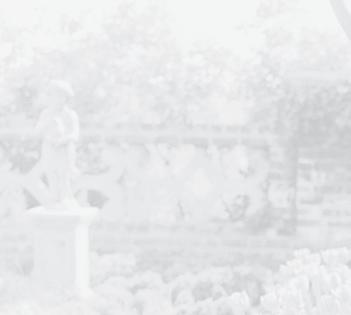
LEAVE A LASTING LEGACY
Legacy gifts supporting the VMHC’s special exhibitions endowment provide strategic funds to dramatically boost our exhibitions program and secure major national traveling exhibitions such as Apollo: When We Went to the Moon. For more information about gift planning, or if you have already made a provision for the museum in your estate plans, please contact Cathy Boe at 804.342.9657.
Thank you for your generosity!
. VirginiaHistory.org | 39
Virginia Historical Society
428 N Arthur Ashe Boulevard Richmond, Virginia 23220
VirginiaHistory.org
Facebook.com/ VirginiaHistory
Instagram.com/ VirginiaHistory Twitter.com/ VirginiaMuseum

FIRST FRIDAYS AT VMHC
Join the fun from 5:00 pm to 8:00 pm on the first Friday of every month. This family-friendly event includes free museum admission, cafe specials, and family activities.

Non-Profit Organization U.S. Postage PAID Richmond, VA Permit No. 1598









































 Aerial view of National D-Day Memorial, surrounded by the Blue Ridge Mountains (National D-Day Memorial Foundation).
Aerial view of National D-Day Memorial, surrounded by the Blue Ridge Mountains (National D-Day Memorial Foundation).























